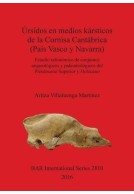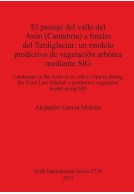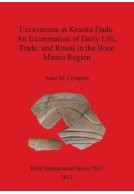Google Books previews are unavailable because you have chosen to turn off third party cookies for enhanced content. Visit our cookies page to review your cookie settings.
Un Estudio Acerca del USO del Espacio en Arqueologia de Sitios Historicos. Corrales De Indios y Rastrilladas: Un Analisis Interregional: Provincias ... Archaeological Reports International Series) (Paperback)
Imprint: British Archaeological Reports
Pages: 232
Illustrations: b/w illus, CD-ROM
ISBN: 9781407313610
Published: 31st July 2015
Script Academic & Professional
Pages: 232
Illustrations: b/w illus, CD-ROM
ISBN: 9781407313610
Published: 31st July 2015
Script Academic & Professional
You'll be £15.00 closer to your next £10.00 credit when you purchase Un Estudio Acerca del USO del Espacio en Arqueologia de Sitios Historicos. Corrales De Indios y Rastrilladas: Un Analisis Interregional: Provincias ... Archaeological Reports International Series). What's this?
+£4.99 UK Delivery or free UK delivery if order is over £40
(click here for international delivery rates)
Need a currency converter? Check XE.com for live rates
(click here for international delivery rates)
Need a currency converter? Check XE.com for live rates
When European settlers arrived on the American continent, they introduced various new livestock, such as cattle, horses and sheep, which caused a restructuring of local economies and indigenous subsistence strategies. Throughout the 17th and 18th centuries, these animals were part of a vast network of trade that connected the Pampa region of Buenos Aires with the Chilean market through mountain paths. This book is the result of research that attempted to identify evidence for the trafficking of livestock in Tandilia and Malargüe, Argentina. This focusses predominantly on two types of evidence: stone structures associated with keeping animals and possible paths (rastrilladas) used by indigenous people to move the livestock. The techniques employed included remote sensing, archaeological survey and historical documents. It was possible to establish a radial pattern of ancient tracks centred on the modern city of Tandil, whereas in Malargüe the various paths surveyed on maps from the late 19th century had an east-west and southeast-northwest inclination. This work presents some of the problems associated with stone structures and possible “paths of Indians” in two areas of Argentina with dissimilar characteristics. Based on its conclusions, further comprehensive study is needed.
Other titles in British Archaeological Reports...















